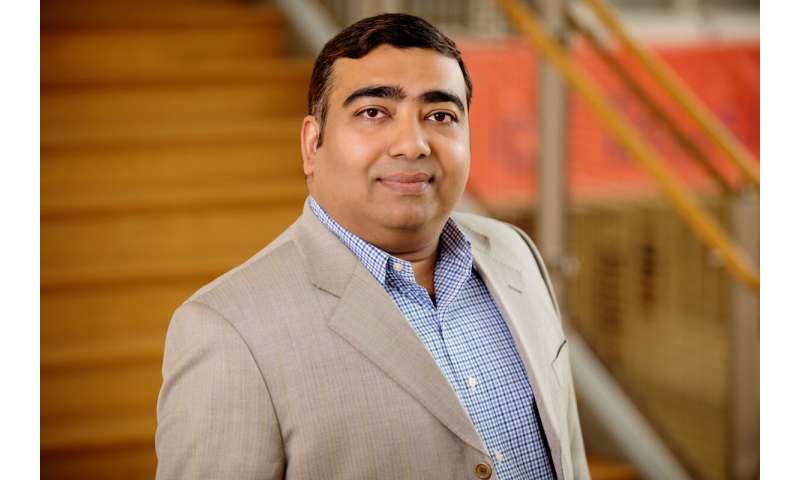
During the early stages of an infectious disease outbreak, channeling resources toward the prevention of disease spread through testing, identification and quarantine activities bests mitigation or curative efforts, according to a new working paper co-written by a University of Illinois at Urbana-Champaign expert who studies innovation in health care and supply chain logistics.
Epidemics such as COVID-19 are characterized by resource constraints due to sudden and unprecedented demand shocks for health care facilities, equipment and consumables such as medical supplies including gloves, masks and surgical gowns. All of those variables combined make the proper allocation of available preventative resources all the more important to blunt the pathogen’s spread, said Ujjal Kumar Mukherjee, a professor of business administration at the Gies College of Business at Illinois.
Mukherjee’s co-author is Karthik Natarajan, an expert in humanitarian logistics and epidemiological logistics management at the University of Minnesota.
“The COVID-19 outbreak has left the global community reeling and struggling for an adequate response,” Mukherjee said. “The objective of preventative actions is to bring down and maintain the ‘basic reproduction number,’ which is the ratio of the rate of spread to the rate of recovery, below a value of one. If the basic reproduction number is above one, then the disease spreads rapidly, almost exponentially, and can engulf a large population. We show that if you delay preventative actions such as quarantine and isolation, that only serves to exponentially increase the future cost of disease management.”
Mukherjee and Natarajan used data from the 2014-15 Ebola outbreak in West Africa to analyze strategies for resource allocation for epidemic management. They find that any delay in adopting adequate preventative actions increases the total disease burden as well as the aggregate social and economic costs of the disease.
“We first derive theoretical insights using an analytical model based on the popular ‘susceptible-infectious-recovered’ model for epidemic dynamics,” Mukherjee said. “Some of the important aspects that drive the insights are the infection propagation rates, recovery rates, availability of standard of care and the extent of initial spread when the disease gets recognized as an epidemic.”
Other important factors include population density of epicenters of spread; mobility of populations to and from the epicenters; and the gestation period of disease infection, “when infective persons are capable of transmitting but are not detectable, or detected and not isolated, which is something we’re seeing a lot of with COVID-19,” Mukherjee said.
Since population-level preventative actions of isolation are expensive in terms of direct and indirect costs of economic productivity loss, deciding the optimal levels of preventative actions in a timely manner is critical, Mukherjee said.
“We also show that the optimal levels of preventative actions increase exponentially with an increase in population density due to underdeveloped community immunity or unavailability of proven cure,” he said.
Furthermore, the presence of a potentially large number of undetected infective populations who can be unknowing transmitters of the disease when in close contact with a susceptible population necessitates significant global isolation initiatives such as the creation of isolation zones or limiting the mobility of populations with high infection load.
“It’s not until the infection spread is controlled using preventative measures, and there is a large number of recovered populations with natural immunity, that the focus can shift to recovery actions,” Mukherjee said.
According to Mukherjee, the takeaways from the Ebola epidemic are wholly relevant and applicable to the current COVID-19 outbreak.
“The resource crunch in terms of medical supplies argues for the necessity to adopt higher levels of preparedness-related measures for future occurrences of similar episodes,” he said. “Maintaining a national inventory of essential supplies such as masks, medical gloves and basic medication—that’s the first line of action. But due to uncertainty in timing and spatial location of epidemics such as COVID-19, measures such as obsolescence and replacement strategy of epidemic safety-net inventory, inventory aggregation and inventory sharing contracts at national or even at international levels would be equally as important.
“For capital equipment such as medical devices like ventilators, the creation of buffer capacity in the medical device manufacturing system that can be activated on short notice is imperative.”
But with COVID-19, the estimated initial disease load in society at detection is relatively higher compared with Ebola, Mukherjee said.
“That makes the early preventative measures such as social distancing and community-level isolation measures play a more significant role in controlling the spread of COVID-19,” he said. “Once these measures have resulted in reducing transmission rates below one, the focus can be diverted to recovery efforts. At every stage of an epidemic, both preventative and recovery actions are required, but the relative importance of the two changes significantly at different stages of an outbreak.
Source: Read Full Article